Artists who informed our research
The following list of artists informed the research, compiled by Rachel Warwick.
- Show all.
- Architecture.
- Archival Practice.
- Pedagogy.
- Performance.
- Spatial Practice.
Annette Krauss
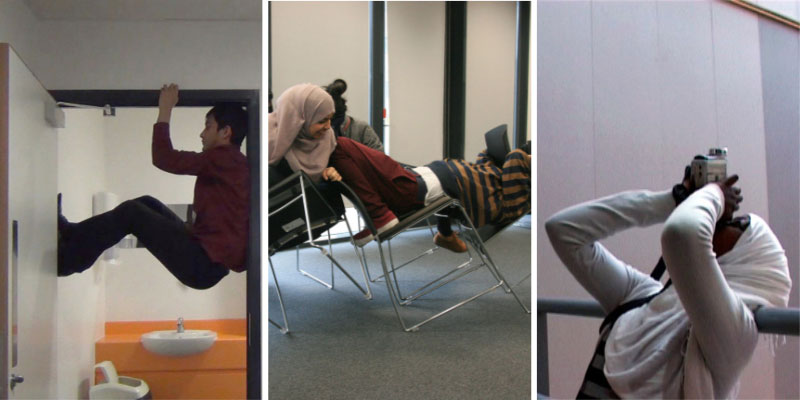
Annette Krauss is an artist and lecturer. Exploring the possibility of participatory practices, her research-based work addresses the intersection between art, politics, and everyday life.
Her work Unlearning Exercises: Art Organizations as a Site for Unlearning (2018) influenced the work of Performing Spaces of Radical Pedagogies (2020) through the conceptualization and definition of “learning” and “unlearning” which have been defined as followed:
“Learning is often progress-oriented, institutionally driven, and focused on the accumulation of knowledge, skills, and behavior. [...] Unlearning denotes an active critical investigation of normative structures and practices in order to become aware and get rid of taken-for-granted "truths" of theory and practice,”
(Choi, Krauss, Heide 2018).
Ultra-Red
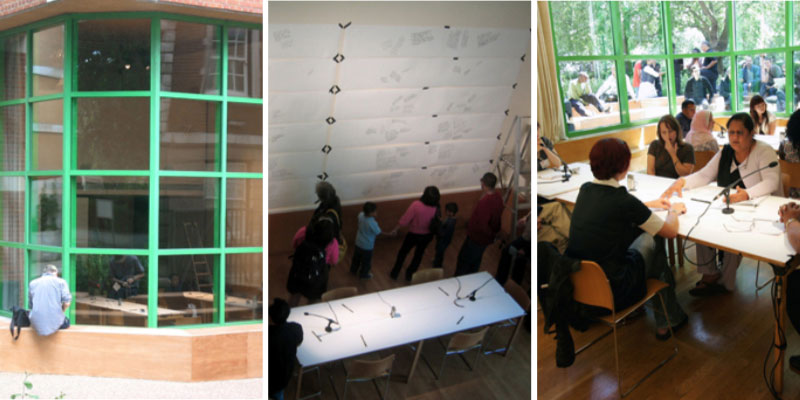
Ultra-red (established 1994) is an international sound-art collective consisting of various members who are involved in activist movements. Protocols for collective listening guide the group’s exchanges between art and political organizing. Recent exhibitions include: Research Under Construction: What Are the Sights and Sounds of Crisis?, Errant Bodies Gallery, Berlin, 2012; What is the Sound of Freedom?, Whitney Museum of American Art, Whitney Biennial, New York, 2012. Ultra-red originated in Los Angeles.
Ultra-red pursues a fragile but dynamic exchange between art and political organizing. Through the performance of a militant sound investigation, the audio collective map contested spaces and histories as an articulation of social relations. Drawing on the formal strategies of early Conceptualism, We Come from Your Futurefacilitates a particular kind of discursive action whose performance of announcing and denouncing constitutes an intervention.
Kristina Lee Podesva
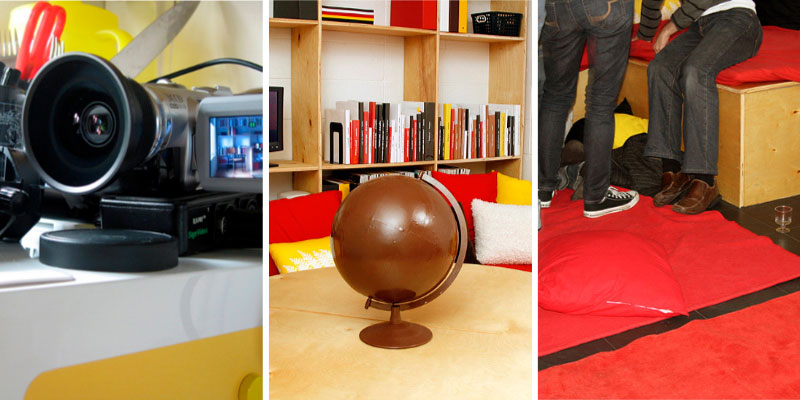
Kristina Lee Podesva is an artist, writer, teacher, and editor who works at the intersection of art making, writing,and publishing. She is currently the Editor & Publisher of B R U N A Press + Archive based in Bellingham,Washington.
Colourschool was a free school within a school dedicated to the speculative research and exploration of five colours: black, white, red, yellow, and brown. For one year it occupied an MFA studio at the University of British Columbia and then for another year it took up residence within the Interactive Digital Studios at the Emily Carr Institute of Art + Design.
Providing a free and open space for critical investigations of colour, identity, artmaking, and knowledge production, colourschool attempted to develop a collaborative colour consciousness through a variety of events including reading groups, film screenings, listening labs, interviews, roundtable discussions, brown bag lunches, performances, and installations, among other activities.
Sarah Pierce

Sarah Pierce is an artist who lives and works in Dublin who interacts in forms of gathering; working with installation, performance, archives, talks and papers; often utilizes these within personal and historical ways to challenge truth, acceptability and understanding. Her interests include radical pedagogies and student work, art historical legacies and figures such as El Lissitzky, August Rodin, and Eva Hesse, community and love theories founded in Maurice Blanchot and Georges Bataille.
“Campus emerges from Pierce’s ongoing interest in the college campus as a space of community predicated on shifting levels of presence and participation,” it utilizes performance, installation, and the archive to develop the campus concerned with ‘being a student.’ The work has three components: installed large curtains through the gallery space, a performance that utilizes movements of protest, instructional language and interacts with the curtains and the video that documents the performance. Campus moves within spaces about in/visibility, obstruction, and the development of politics.
Adrian Blackwell
![Model for a Public Space [Knot]](img/Blackwell.jpg)
Adrian Blackwell (born and lives in Toronto, ON, Canada) is a settler artist, urban designer, theorist, and educator. Blackwell’s work centers around the relation between physical spaces and political-economic forces. His works are set in public spaces to intervene and challenge the privatization of common resources.
As a part of Extra-Curricular: Between Art & Pedagogy, an international conference exploring the relationship between art and education Blackwell presented his work Model for a Public Space [Knot](2010) . This work has peaked the interest of Performing Spaces of Radical Pedagogies (2020) with its spatial function as an experiment for relations and social engagement and how the structure opens up to a multitude of public discourses.
Xu Tan
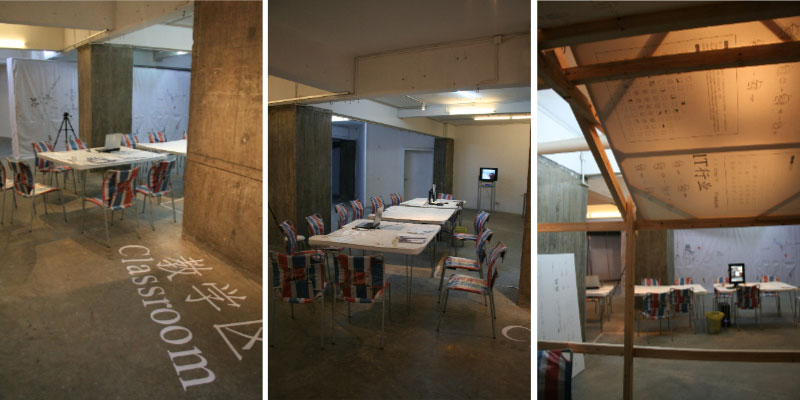
Xu Tan (Born 1957, China) began his career as a member of the well-known Guangzhou-based artist collective, “Big Tail Elephant.” His installation and video works explore issues crucial to the post-Cold War, postcolonial, and increasingly globalized world like urbanization, the geopolitical relationships between the developed and developing worlds in terms of political, economic, and cultural production and their impacts on personal lives and their expressions. Xu’s works are often site-specific, dealing intimately with everyday experiences to critically demonstrate the tension between globally circulating images, modes of communication, and the impact they have locally. Powerfully and intelligently, Xu’s work calls for contemporary art to engage with social reality in our time.
“Searching for Keywords is a series of activities (projects). There are about 100 keywords in Chinese society. These keywords are helpful for understanding the current social life and the overall consciousness of society in China,” Keywords School in Toronto, 2010 thinks through Xu Tan’s previous iterations of the work to develop new dialogue and sets of keywords through workbooks, videos, forums and dictionary of keywords. (xutan-keywords.com)
Post Commodity
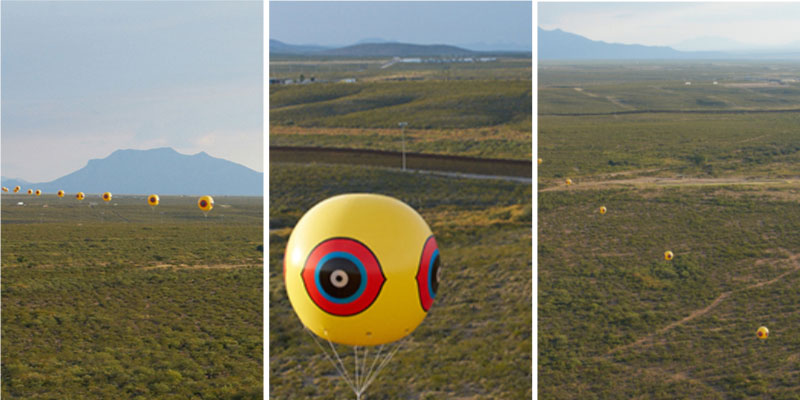
The Repellent Fence is a social collaborative project among individuals, communities, institutional organizations, publics, and sovereigns that culminate with the establishment of a large-scale temporary monument located near Douglas, Arizona and Agua Prieta, Sonora. This 2 miles long ephemeral land-art installation is comprised of 26 tethered balloons, that are each 10 feet in diameter, and float 100 feet above the desert landscape. The balloons that comprise Repellent Fence are enlarged replicas of an ineffective bird repellent product. Coincidently, these balloons use indigenous medicine colours and iconography -- the same graphic used by indigenous peoples from South America to Canada for thousands of years. The purpose of this monument is to bi-directionally reach across the U.S./Mexico border as a suture that stitches the peoples of the Americas together—symbolically demonstrating the interconnectedness of the Western Hemisphere by recognizing the land, indigenous peoples, history, relationships, movement and communication. (Postcommodity, Repellant Fence)
Postcommodity is an interdisciplinary arts collective comprised of Cristóbal Martínez and Kade L. Twist. Postcommodity’s art functions as a shared Indigenous lens and voice to engage the assaultive manifestations of the global market and its supporting institutions, public perceptions, beliefs, and individual actions that comprise the ever-expanding, multinational, multiracial and multiethnic colonizing force that is defining the 21st Century through ever-increasing velocities and complex forms of violence. Postcommodity works to forge new metaphors capable of rationalizing our shared experiences within this increasingly challenging contemporary environment; promote a constructive discourse that challenges the social, political and economic processes that are destabilizing communities and geographies; and connect Indigenous narratives of cultural self-determination with the broader public sphere. (Postcommodity, About)
Valie Export

Valie Export (often written as 'VALIE EXPORT') (born May 17, 1940 in Linz as Waltraud Lehner, later Waltraud Höllinger) is an Austrian artist. Her artistic work includes video installations, body performances, expanded cinema, computer animations, photography, sculptures and publications covering contemporary arts.
Body Configurations (1972-76), a series of photographs depicting the interaction of the artists body to the cities architecture. The series evokes conversations and emphasizes the tensions of freedom, conformity, and alienation for women within social urban environments.
Emily Jacir
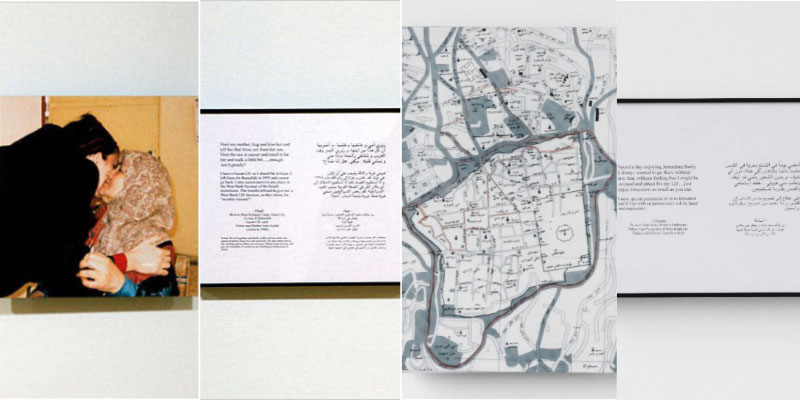
Emily Jacir is a Palestinian artists and filmmaker. Her work investigates histories of colonization, exchange, translation, transformation, resistance, and movement.
"If I could do anything for you, anywhere in Palestine, what would it be?", the question she posed to exiled Palestinians that lead to a series of performances of lending herself as someone with more freedom, provided by her united states passport.
Where we come from, an installation of performances documented as dypticts of the accepted wishes from Palestinians in exile and the representation of what she did to realize these wishes. Where We Come From, exploits artistic privilege, visual representation, and phantasmic performance, a viewer must begin to become uneased by the things so easily taken for granted.
Celine Condorelli
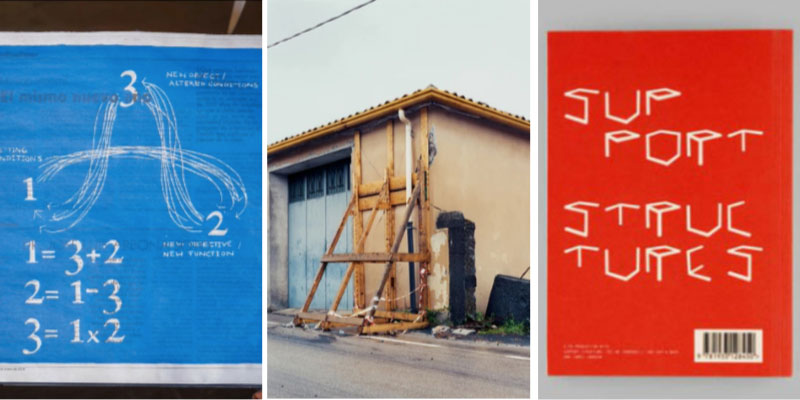
Céline Condorelli works with art and architecture, combining a number of approaches from developing possibilities for ‘supporting’ (the work of others, forms of political imaginary, existing and fictional realities) to broader inquiries into forms of commonality and discursive sites, resulting in projects merging exhibition, politics, fiction, public space and whatever else feels urgent at the time. Condorelli is interested in the role and nature of what she calls ‘support’ through three specific, yet parallel and simultaneous strands.
Sketch of the artist’s work ethic is described as a continuum or formula for working. The importance of the continuum is so that no event, work, or dialogue ends. All her works have a relation to each other or can be in conversation with one another.
Lauryn Youden
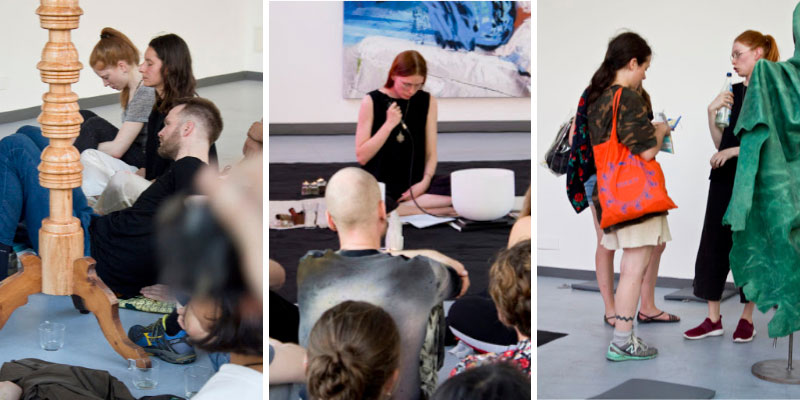
Lauryn Youden is a Canadian performance and installation artist, writer and independent curator based in Berlin, Germany. Youden’s practice derives from her research and navigation of modern western medicine, the medical-industrial complex, ‘alternative’ healing practices and traditional medicine for the treatment of her chronic diseases and invisible disabilities.
Her work You Say I for Me among other performance works by the artists are influential examples of artists re-evaluate history. Through public presentations of Youden's personal experiences they re-evalute the history of medicine through a feministy, crip, queer lens her work illuminates and advocates for repressed marginalized and forgotten practices of care and knowledge.
Dylan Miner
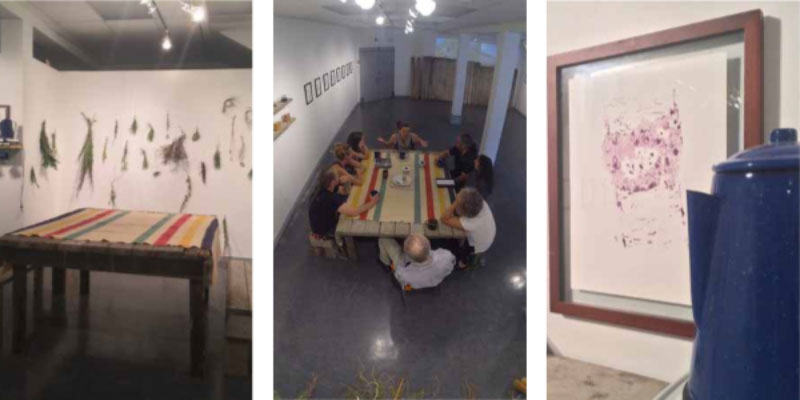
Dylan Miner is a Wiisaakodewinini (Métis) educator, writer, historian, and curator, as well as an artist working in multiple media.
The title of this project, Michif – Michin (the people, the medicine), plays on the linguistic similarities between a Métis word for medicine (michin) and a word used to describe the Métis language and people (Michif). Accordingly, Miner’s work focuses extensively on language and herbal remedies as being at the core to community healing.
Miner’s relational work, The Elders Say We Don’t Visit Anymore, is developed at three levels: the land, the history and the people. It is with each component that makes Miner’s work influential to Perfoming Spaces of Radical Pedagogy (2020). The Elders Say We Don’t Visit Anymore, is the act of conversing over tea with the community.
Raymond Boisjoly
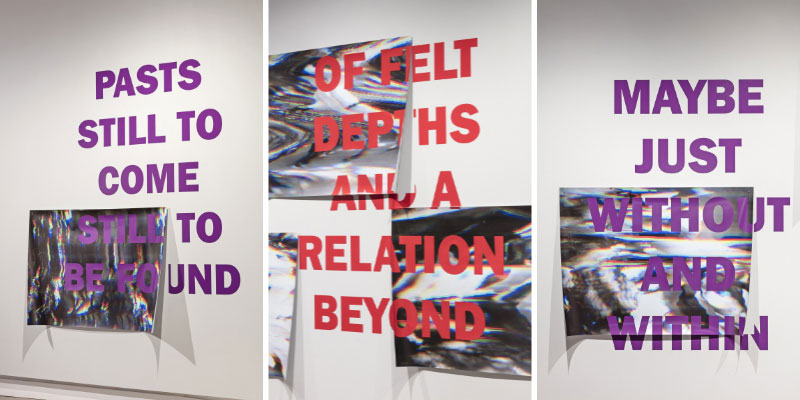
Raymond Boisjoly, is an Aboriginal artist of Haida and Québécois origin based in Vancouver, British Columbia, Canada.
Raymond Boisjoly, Of felt depths and a relation beyond (2016), is a solvent-based inkjet print accompanied by vinyl lettering that says “OF FELT DEPTHS AND A RELATION BEYOND”, the work has a relation to the archive, performance and education practices within the arts. “Boisjoly’s accentuation of the unsteady nature of technology resonates against issues of Indigeneity and cultural transformation, asserting new possibilities for inhabiting the present”, the way Boisjoly plays with technologies to display a disruption and abstraction removes the source from an objective meaning or finite. It allows text and image to give new meaning and conversation.
BC Collective

BC stands for ‘Before Cook and Before Columbus’, and was initiated as a way to share, engage and exchange Indigenous ideas and concepts. Founded by Cora-Allan Wickliffe and Daniel Twiss in 2017, BC launched at the Corban Estate Arts Centre and is dedicated to supporting Indigenous practitioners and community events.
In te reo Māori, the Māori language, Hākari means feast. This dining-table installation, "Hākari as guests" (2019) by BC Collective with Louisa Afoa, brings together ancestral practices and evokes the sharing of food as a means of remembering home and strengthening kinship across distance and cultural difference.
Chris Clarke and Bo Yeung

Bo Yeung is a chinese, multidisciplinary, visitor-artist residing on the traditional territory of Trʼondëk Hwëchʼin. Her Work questions the web of cultural identity, diaspora, memory, and complicity by gently threading these complexities into experiences.
Chris Clarke is a citizen of Dawson City, residing on the traditional territory of Trʼondëk Hwëchʼin. Her collaborative art practices have focused on supporting voices of indigenous experience. She has worked as an instructor, coordinator and mentor using tools of written word, photography, animation, video, puppetry and radio.
Trinh T. Minh-Ha
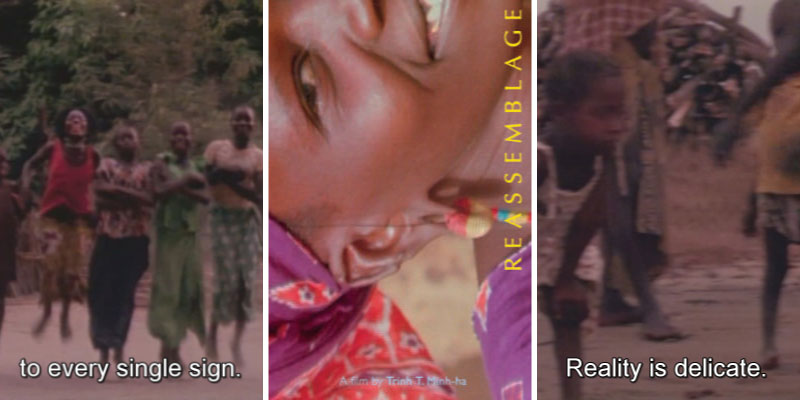
Trinh T. Minh-ha is a Vietnamese filmmaker, writer, literary theorist, composer, and professor. She has been making films for over thirty years and may be best known for her films Reassemblage, made in 1982.
Women are the focus but not the object of Trinh T. Minh-ha’s influential first film, a complex visual study of the women of rural Senegal. Through a complicity of interaction between film and spectator, REASSEMBLAGE reflects on documentary filmmaking and the ethnographic representation of cultures.
Lygia Clark
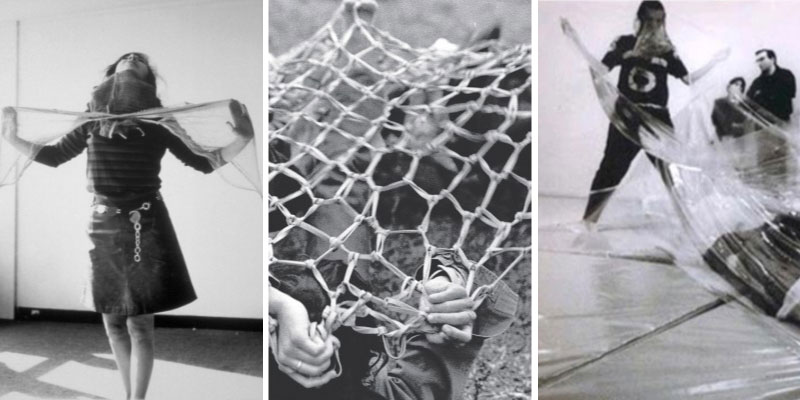
Lygia Clark was a Brazilian painter, sculptor, installation and participatory artist.
Biological Architecture, an interactive organism made up of participants and non-living material (i.e. plastic). Several participants are connected to each other via the plastic material in an attempt to cover or form a mutual shelter. As the interaction continues more participants enter in becoming organs and limbs of a ‘communal body’. The work embodies relationality, and the elimination of boundaries through discussions between body and object, and self and other.
By using the plastic as a 'relational' material, these structures aim to eliminate the boundaries between body and object, self and other, and anticipate the relational objects that would play a central part in Clark's therapeutic practice from 1976 onwards.
Tania Brugerra
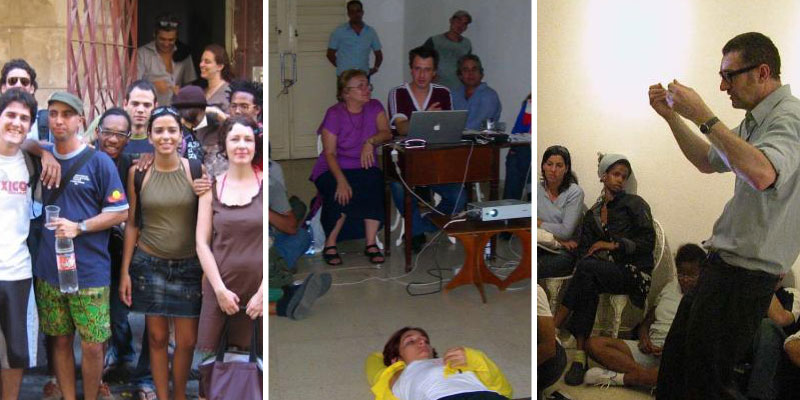
Tania Bruguera is a Cuban installation and performance artist based in New York and Havana. Her work Cátedra Arte de Conducta (Behavior Art Department - 2002-2009) is a long-term intervention focused on the discussion and analysis of sociopolitical behaviour and the understanding of art as an instrument for the transformation of ideology through the activation of civic action on its environment. The work is activated through the practice of transforming spaces in society through art.
“This site and the political-timing specific piece is displayed through the creation of a pedagogical model that makes up for the lack of civic discussion spaces on the function of art in present Cuban society and promotes new generations of artists and intellectuals.” (https://www.taniabruguera.com/)
Tim Rollins and K.O.S (Kids of Survival)
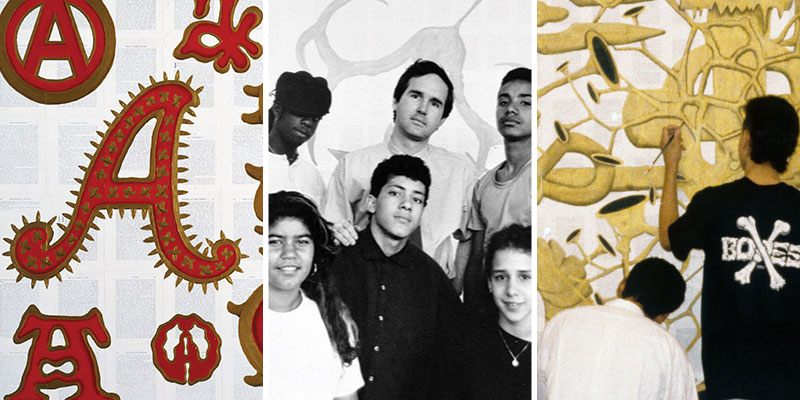
Tim Rollins was an American artist and teacher. Best known for his work with K.O.S and Art and Knowledge Workshop Rollins questioned who can make art, how art is made, who can learn and what’s possible. The works created with K.O.S stemmed from curriculums on literature, theatre, music and applied these teachings into bodies of work.
Thomas Hirschhorn
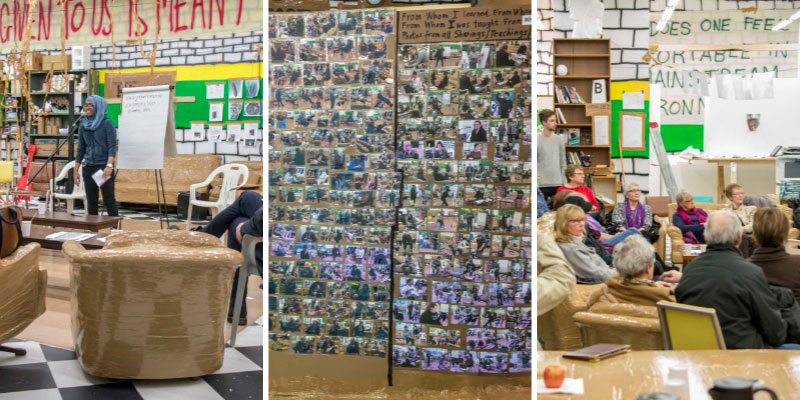
Thomas Hirschhorn (1957) is a Swiss artist who works and lives in Paris. Originally trained as a graphic designer, Thomas Hirschhorn shapes public discourse that relates to political discontent, and offers alternative models for thinking and being.
What can I learn from you. What can you learn from me, is an immersive critical workshop centered around the concept of sharing. Sharing is not only defined by the idea that there is something to share, but that sharing is learning and generosity and reciprocity. That we can come together, share and accept the gesture of sharing from another.
“I want to create the conditions in which to share our competencies, all kinds of competencies we own, as human beings. 'What can I learn from you. What can you learn from me.' reflects the ambition and the attempt to create a universal work of art."
—Thomas Hirschhorn
Theaster Gates

Theaster Gates is an American social practice installation artist and a professor in the Department of Visual Arts at the University of Chicago. He was born in Chicago, Illinois, where he still lives and works.
See, Sit, Sup, Sip, Sing: Holding Court (2012) is an installation work comprised of chairs, chalkboards, and other materials pulled from a now-closed school on the South Side of Chicago, Crispus Attucks, named after the first martyr of the American Revolution. The installation is meant to create a new experience for learning through modes of sharing and provoking conversation.
Aaron Landsman
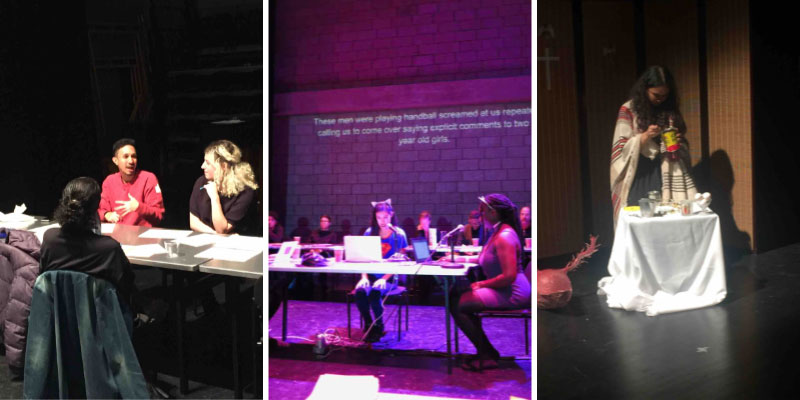
Aaron Landsman’s practice centers around performance, social interactions and collaboration. Landsman’s work utilizes people, language, space and time and often begins with questions that allow the performance or project to enter in from. His current research and projects focus on how to place frames on systems that reflect our behaviours and relations with each other. That through performance there is hope in understanding each other and how we are together more clearly.
Some of his work is co-authored with community members over long periods of time; some is developed through ongoing relationships with other artists; all of it honors collaboration as a driving force.
Paul Chan
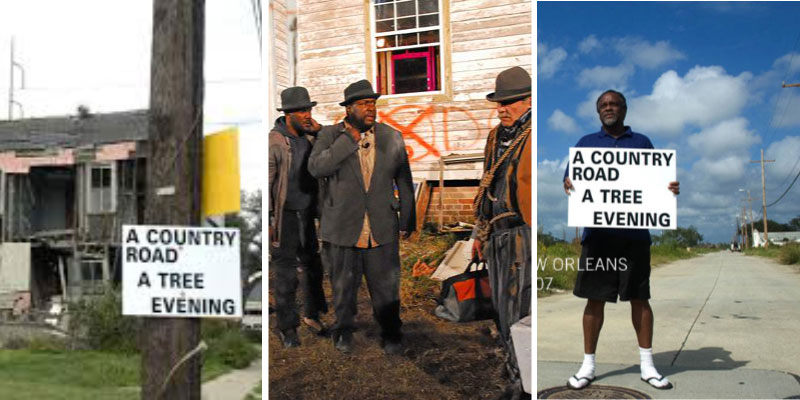
Paul Chan is an American artist, writer and publisher. His single channel videos, projections, animations and multimedia projects are influenced by outsider artists, playwrights, and philosophers such as Henry Darger, Samuel Beckett, Theodor W. Adorno, and Marquis de Sade.
“Waiting for Godot has been staged on Broadway (in 1956), at a prison (San Quentin), and in the middle of a war (during the Siege of Sarajevo, directed by Susan Sontag). It is a simple story, told in two acts, about two tramps (we have other names for them today) waiting for someone named Godot, who never comes. In New Orleans in 2007, Godot is legion and it is not difficult to recognize the city through the play. Here, the burden of the new is to realize the play through the city.” (Chan, Artist Statement)
Waiting for Godot in New Orleans (2010), began as a public site-specific staging of Samuel Beckett’s play that evolved into a larger social production, including workshops, seminars, and conversations with the community. The importance of social and public relations in the work is about giving back to the community; allowing and hoping something will stick and be remembered.
Althea Thauberger
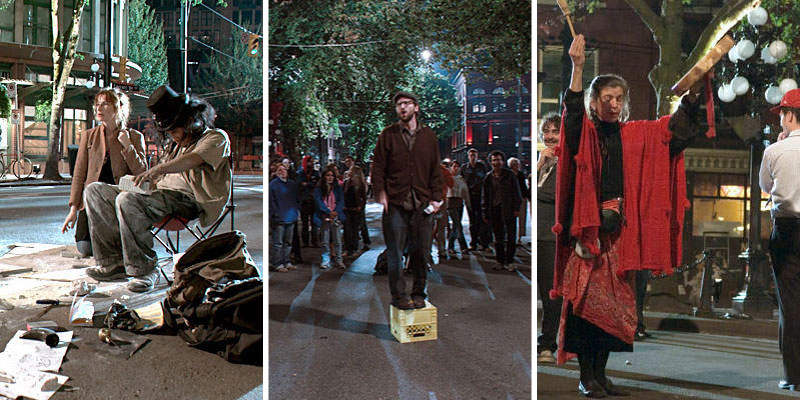
Althea Thauberger is an artist and filmmaker whose practice incorporates collaborative research and performative processes in social documentary. Her projects typically involve sustained engagements with communities associated with the sites of their production.
Carrall Street (2008), is a site-specific, collaborative performance/intervention that took place along Vancouver’s oldest streets. The work considers the contested histories, and gentrification to look are how artists and participants can intervene within the space of the city.
Jeremy Deller
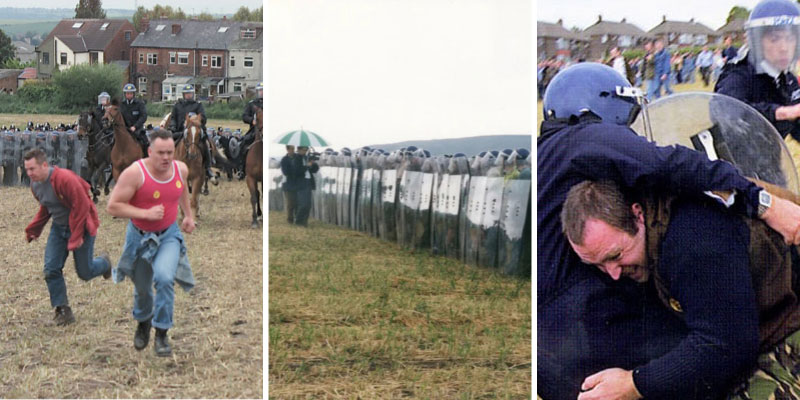
Jeremy Deller is an English conceptual, video and installation artist. Often Deller's work is collaborative and focused on specific social, and political moments to realize event-based projects.
The Battle of Orgreaves (2002) is an example of how Deller works with a key event like the English Miners Strike of 1984, and the communities affected by the consequences of the event. In the process of the reenactment, there is an understanding of how the work becomes a process of further dissection and investigation into the historical moment. It not only acts to allow Deller’s understanding of what happened and why, but allows the reenactors to undertake different perspectives of the event.
Stan Douglas

Stan Douglas is a Vancouver-based artist. Douglas works in film and video installations, photography and television. His practice frequently touches on the history of literature, cinema and music, while examining the "failed utopia" of modernism and obsolete technologies.
The Circa 1948 (2014) is an interactive installation that becomes a doorway into the past–to fragments of history as Stan Douglas interprets them. The work pushes the boundaries of interface and story; to experiment with ways in which we can experience and understand our cities landscape that has become lost through gentrification.
Jef Geys
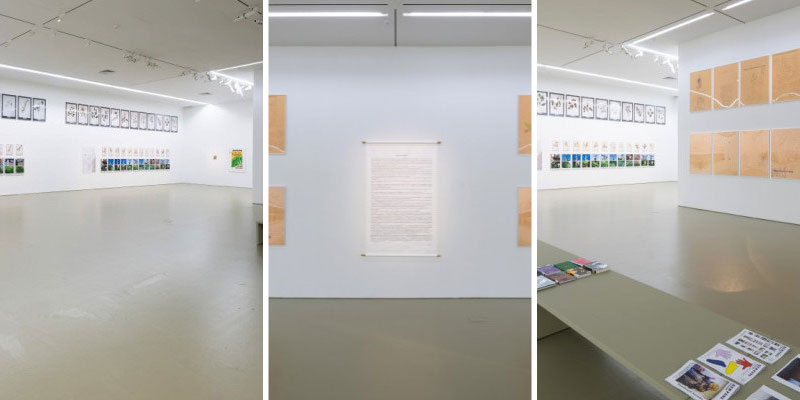
Jef Geys (born 1934 in Leopoldsburg, BE) work can be understood as an ongoing project that combines conceptual attitudes, educational activities and formal experiments. Gey’s work began as projects working against the commodification and institutionalization of art and has worked to develop and function unprecedented approaches with collective creativity and community.
Coloring Book for Adults (1963–65), should be reflected on as a pedagogical art tool. Through the interaction of the coloring books participants complete the banal task of coloring while looking upon images heavily present within an art world. It contains the themes of: 1. the gendered female form in art history; 2. maps and geopolitical borders; 3. the mid-century model home; 4. human anatomy; 5. the masculine image of the soldier; 6. consumer commodities; 7. the automobile. The coloring book opens up the possibility of understanding themes within art and learning that artwork doesn’t need to be created by a singular individual.
Maria Hupfield and Charlene Vickers
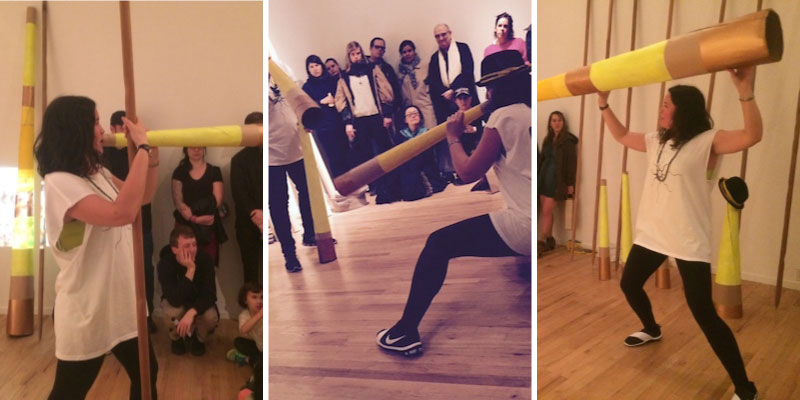
Maria Hupfield is a performance, sculpture and installation based artist, who has worked in Brooklyn, New York and is currently working and living in Toronto. She is an Anishinaabe of the Wasauksing First Nation, located in Ontario, Canada. She works within performance, sculpture and installation
Charlene Vickers is an Anishinaabe artist living and working in Vancouver. Born in Kenora, Ontario and raised in Toronto, her painting, sculpture, and performance works explore memory, healing, and embodied connections to ancestral lands.
All Places All Times, Always and Forever (2017) is a collaborative performance activating the space with vocalization, experimental sound, song, improvised and scripted talk-back, and movement adding a physical presence that speaks to cooperation and collaboration; place and address territorial acknowledgement. All Places All Times Always and Forever models indigenous to indigenous and non-indigenous methods of working with audience, place and one another.
Tanya Linklater
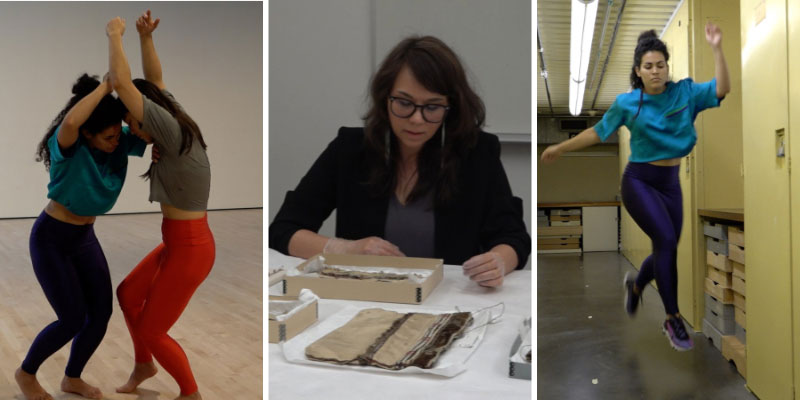
Tanya Lukin Linklater (b. 1976, originates from the Native Villages of Afognak and Port Lions, southern Alaska; lives/works: North Bay, Ontario) work centres knowledge production in and through orality, conversation and embodied practices, including dance. While reckoning with histories that affect Indigenous peoples' lives, lands and ideas, she investigates insistence. Tanya’s practice takes place through performances, videos, installations and writings. In her work, there is an aspect of collaboration, often producing performances with dancers, composers, musicians and poets, in relation to museums’ architecture, objects in the exhibition, scores, and cultural belongings.
An Amplification Through Many Minds (2019) is a work in three parts: visiting Alutiiq and Unangan cultural belongings at the Phoebe A. Hearts Museum of Anthropology’s on and off-site collections storage and the artists’ oration of the belongings; open rehearsal for the camera with three dancers at the San Francisco Museum of Modern Art White Box in a choreographic process that investigates the museum as a structure that interrupts the life of cultural belongings; and a return to collections storage through dance that enlivens the space.
Linklater’s work has become important in our research when thinking about how performance activates institutions and spaces of pedagogy.
Marianne Nicolson
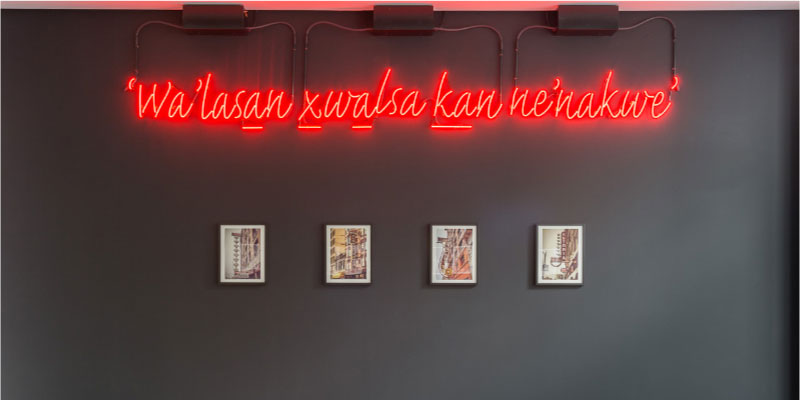
Marianne Nicolson is an artist-activist of the Musgamakw Dzawada’enuxw First Nations. The Musgamakw Dzawada’enuxw Nations are part of the Kwakwaka’wakw (Kwak’wala speaking peoples) of the Pacific Northwest Coast. She is trained in both traditional Kwakwaka’wakw forms and culture and contemporary gallery and museum-based practice. She holds a Bachelor of Fine Arts from the Emily Carr University of Art and Design (1996), a Master of Fine Arts (2000) from the University of Victoria, as well as a Master of Arts (2005) in Linguistics and Anthropology and a PhD (2013) in Linguistics and Anthropology with a focus on space as expressed in the Kwak’wala language. Nicolson works as a Kwakwaka’wakw cultural researcher and historian, as well as an advocate for Indigenous land rights. Her practice is multi-disciplinary encompassing photography, painting, carving, video, installation, monumental public art, writing and speaking. All her work is political in nature and seeks to uphold Kwakwaka’wakw traditional philosophy and worldview through contemporary mediums and technology.
Marianne Nicolson's new year long installation, Oh, How I Long For Home, addresses a persistent idea of the city as a conflicted promise for Indigenous people. Representing monetary wealth, Western education and a pledge of so-called progress, the city's neon lights, stocked department stores, schools, and wallpapered rooms project a notion of success for people outside urban centres.
Rebecca Belmore
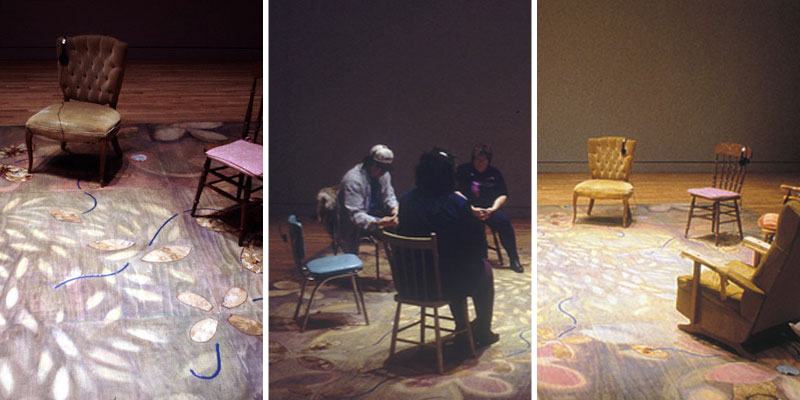
Rebecca Belmore (Anishinaabe) is a multidisciplinary artist whose practice is rooted in the political and social realities of Indigenous communities. Her works make evocative connections between bodies, land and language.
Mawu-che-hitoowin: A Gathering of People for Any Purpose[:] a plywood floor, partly laid with bits of old patterned linoleum, sat a circle of chairs, all of them different, all of them worn with use. The chairs fitted with audio tapes: the viewer was invited to sit in the chairs and use headphones to hear the voices and stories of the seven different women who had donated them, each one telling of her own experiences. (One recording was of bird song.) This work’s power depended upon the voices and stories of loved ones, community, children and parents. It was a political gesture for Belmore to feature those voices in the space allocated to her art. Here it was perfectly clear that narrative, identity and subjectivity are not just abstract issues, but concrete ones, tied to life.
(Scott Watson, Whose Nation?, Canadian Art, Spring 1993)
Leanne Betasaemosake Simpson

Leanne Betasamosake Simpson is an indigenous (Mississauga Nishnaabeg) scholar, writer and artist. Her work breaks open the intersections between politics, story and song—bringing audiences into a rich and layered world of sound, light, and sovereign creativity.
Leanne is also a musician combining poetry, storytelling, song-writing, and performance to collaborate with musicians to create unique spoken songs and soundscapes.
Please check out her latest release, Noopiming Sessions in 2020, on Gizhiiwe Music at Bandcamp (https://gizhiiwe.bandcamp.com/).
Pedro Reyes
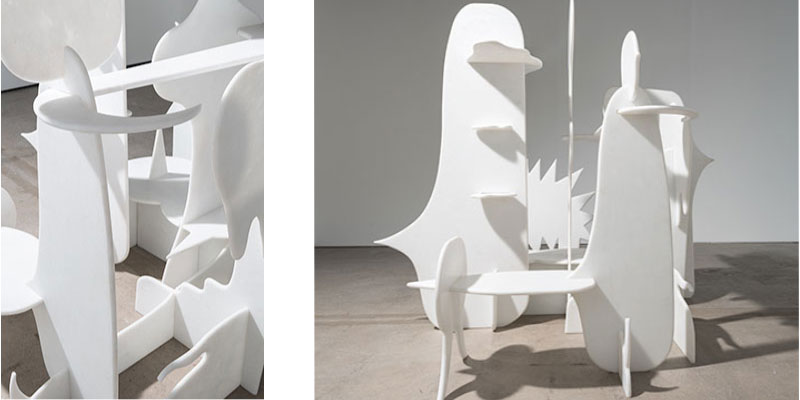
Pedro Reyes is an artist born and based in Mexico City. He works in mediums such as sculpture, architecture, video, performance and participation. Reyes’ work aims to increase individual or collective agency in social, environmental, political or educational situations.
Colloquium (2013) “is a series of speech bubbles [interlocking] in the style of a house of cards. Made in marble, these shapes represent voices, opinions, languages, and emotions. A pop allegory of polyphony: whispers or shouts, transmissions or interjections, they support each other as an architecture of speech.” (pedroreyes.net)
Lorna Brown

Lorna Brown is a Vancouver-based artist, writer, and curator and has taught at Emily Carr University of Art and Design and Simon Fraser University. Brown was the curator of Group Search: art in the library, a series of artists’ projects at the Vancouver Public Library from 2006 to 2008, led the development of the Langara College Centre for Art in Public Spaces in Vancouver from 2008 to 2009 and was the Editor and Project Manager for the digital archive Ruins in Progress: Vancouver Art in the Sixties. She received the Vancouver Institute for the Visual Arts Award in 1996 and the Canada Council Paris Studio Award in 2000. Her work has been exhibited internationally and is in the collections of the National Gallery of Canada, the BC Arts Council, the Surrey Art Gallery, and The Canada Council Art Bank.
AdmIndex is a web-based project on the textual and visual languages of administration. Admindex is the accumulation of 58 mission statements from institutions, non-profit organizations, businesses and civic agencies in proximity to the new Woodward’s development. The collecting and curating of the common language in the mission statements displays how these groups represent and service the Downtown Eastside.